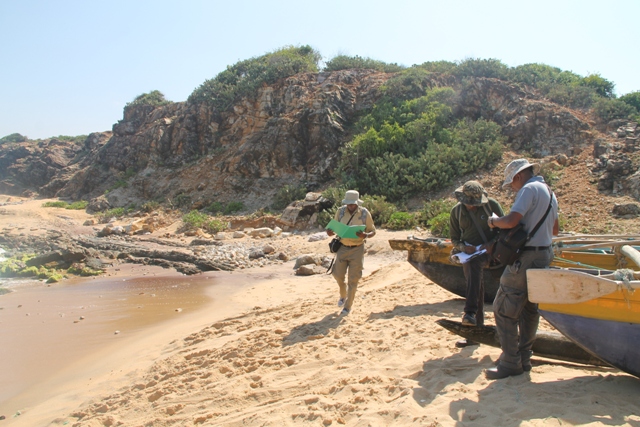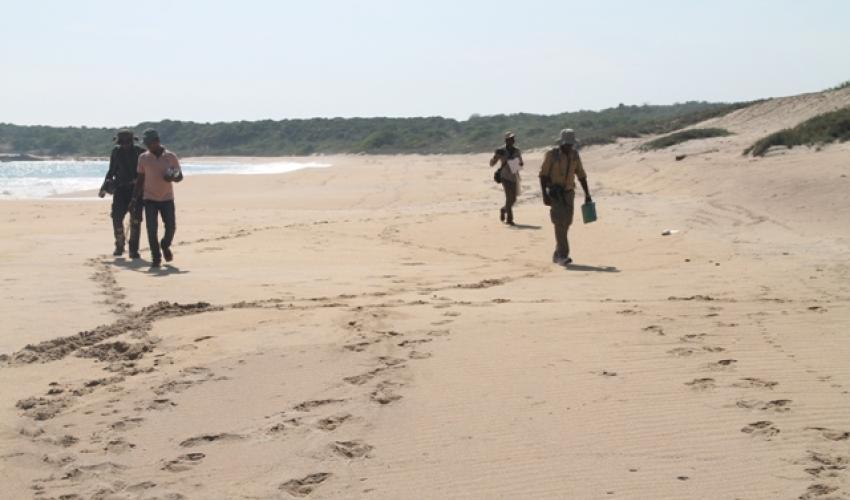Anantara Peace Haven Tangalle Resort joins IUCN in the sea turtle nesting habitat survey in the deep south of Sri Lanka
Anantara Peace Haven Tangalle Resort, one of Sri Lanka’s top-ranked luxury resorts and the International Union for Conservation of Nature (IUCN) joined hands in May 2017 to support sea turtle conservation in Sri Lanka.

Anantara and IUCN teams conducting the survey
Photo: ©IUCN/Kumudini Ekaratne
The project, Conservation of Sea Turtles and Coastal Habitats around Anantara Peace Haven Tangalle Resort, aims to replicate the success of Anantara’s sustainability initiatives through the Dollars for Deeds programme in other countries such as Thailand. The project endeavours to do so by enhancing the conservation of marine turtles that visit the beaches surrounding the resort as well as by enriching the coastal habitats in the resort premises, which will in turn enhance the ecological resilience of these habitats.
 Photo: ©IUCN/Kumudini Ekaratne
Photo: ©IUCN/Kumudini Ekaratne
One of the key activities of the project, the assessment of marine turtle nesting habitats along the Southern coast—from Tangalle (Anantara Peace Haven Tangalle Resort) to Yala National Park (Kumbukkan Oya estuary)—in collaboration with the Department of Wildlife Conservation commenced in August 2017. A total distance of approximately 120 km will be surveyed in four stages during the assessment.
The second stage from Walawa river mouth (Ambalantota) to Kirindi oya river mouth (Uraniya), covering a distance of 32km, was assessed from 13-20 November 2017. The Resort Naturalist and the Assistant Spa Manager of Anantara Peace Haven Tangalle Resort joined the IUCN survey team in this endeavour. Each stretch is sub dived in to 250m units and in each unit, the team record their observations on the quality/nature of the nesting habitats, nesting turtle abundance and both direct and indirect threats to nesting turtles.
The assessment is scheduled to be completed in March 2018. The results generated from the current assessment will be compared with the assessments that were carried out by IUCN in the same survey stretch in the year 2004.
